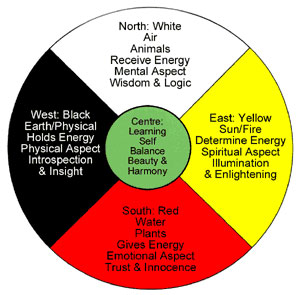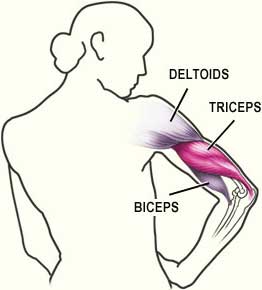Happy National Aboriginal Day (June 21st) in Canada. A good friend of mine recently posted this Facebook article and link about Johnny Depp’s role in the new “Lone Ranger” movie: ‘Depp says he ‘took shot at erasing’ clichés with Tonto role’ (www.santafenewmexican.com) The by-line reads: Johnny Depp says he tried to turn the clichés about Native Americans on their heads with his ironic portrayal of Tonto in the new film The Lone Ranger.
He’s a gorgeous – but ignorant – idiot if he thinks that this work did ANY good for anyone other than him and the movie/plastic industry that will benefit now from a series of crow-hat Halloween costumes, Native-y bangles made in China. Maybe he needs to take another authenTIK tour of a ‘rez led by ‘expert guides’ (which usually means a White guy who met some Native guys and heard cool stories that they want to re-tell now to share the wisdom…for lots of money). GAG!
This movie – and the marketing of it – makes me FURIOUS on many levels: A Native actor didn’t play a Native role (again). Hey Johnny – sitting with a few Elders and reading some Western novels written by White men doesn’t make you an expert in anyone else’s ways. I have a Masters Degree in Indigenous Education, have been blessed to work with and interview and learn from thousands of diverse Aboriginal people from many Nations and groups across Canada, and advocate for Aboriginal rights in my work and communities for almost 15 years now – yet I dare not call myself an expert. I can continually fight to provide spaces for THEM to tell THEIR stories in THEIR way… and if I do share my insights, I clearly identify that I’m coming from a White, colonized perspective while fighting for social justice and a more inclusive society.
In his interviews, I feel Depp takes a patronizing tone in saying ‘we can help them’ and ‘they can be warriors even though they have pathetic lives.’ He doesn’t own the fact that he is part of a capitalist, racist, colonizing, elitist industry that created and benefits from keeping them down and out.
Here’s an e-card I made up to share today:
Does he really respect the diversity and cultures of the First Peoples of this land? Does he acknowledge their right to self-governance – or at least equal voice at tables and boardrooms where ‘their his-stories’ are told, never mind rooms where their traditional territories are impacted? If not, he’s just another White guy benefitting from exploiting stereotypes, making money by continuing to paint THEM as people of the past, not people of the present.
We need to ask ourselves this hard question: Who benefits most when media/society continues to box Native people into one of seven dated (and limited) roles?
It’s far easier for big business to continue painting them either as:
1) wise old Elder/healer/Medicine Man, 2) crazy activist rebel/scorned Youth/savage warrior, 3) Pocahontas-style Indian princess, 4) poverty-stricken-drugged-out-helpless-single-mom, 5) noble environmental activist/tree-protector, 6) drunken broken Indian , and the newest version… 7) corrupt Chief.
Then we don’t have to admit that they are resilient survivors of chemical, political, cultural and economic warfare waged against them by OUR leaders. our policy-makers, our (ack!) ancestors. Aboriginal people have rights written into Canada’s constitution for a reason – many original writings (and even the Royal Proclamation of 1763) required that governments negotiate with Indigenous people before any British subject (or other colonizer) interfered with them. As Tom Peace wrote earlier this year on www.ActiveHistory.ca,
“The crown, after all, was concerned with “the great Frauds and Abuses [that] have been committed in purchasing Lands of the Indians.” Anyone living on land not properly ceded to the crown was to be removed. In issuing the Proclamation, the British wished “that the Indians may be convinced of Our Justice, and determined Resolution to remove all reasonable Cause of Discontent.” (Click here for the full text)
Many historians acknowledged that without the help of First Nations guides, women and leaders, most settlers would not have survived very long here…and a respectful relationship was needed to build a nation that benefitted all its inhabitants.
But many developers/businesses/exploiters don’t like that concept, because their short-term profit-driven agendas are disrupted and delayed. Natives are becoming more educated, winning more court cases against big businesses who were used to getting their own way. Now they are being more supported by ‘mainstream’ Canadians, international advocates for human rights and environmentally aware people who see them as the last stance for sustainable global development.

SAY Magazine – Cover of issue 51 Aboriginal voices and perspectives in media copied from http://www.saymagcom
But it is still a battle for success stories or other roles for Aboriginal people make their way into our screens, books, boardrooms and classrooms. If you follow most news, you’d never know that the fastest growing group of successful business people in Canada is
Aboriginal women and that they are enrolling in many University programs nearly at the same rate as non-Native people now ( http://www.statcan.gc.ca/pub/81-004-x/2009004/article/11017-eng.htm). Media-makers like SAY Magazine (www.saymag.com) and FAIR Media (https://www.facebook.com/realIndigenous) get some stories into ‘mainstream’ news, but it’s still a small ripple fighting a well-established tidal wave of misrepresentation.
Unfortunately, I get the sense that people like Depp who are ”trying to help’ don’t usually want to address or change any of the systemic issues that we continue to ignore. WE forced/relocated people onto Reservations/reserves, disconnected them from access to economic and education opportunities, stole and then abused their children, attempt to discredit their histories and sciences and connection to environment…all in the name of ‘modern progress.’ How about ‘helping’ by promoting human and Indigenous rights, sustainable development, social responsibility and simple respect for different ways? How about looking for common ground instead of difference? Or at least, how about insisting that a Native actor play a REAL Native hero role, not a fictional Western interpretation of idiotic sidekick to wise White man?
It is uncomfortable to admit that WE WHITE PEOPLE continue to benefit from lands, resources, medicines, and knowledge stolen from the many diverse groups of First Peoples of North America… and that we still don’t want to share the wealth and opportunities with those whom we shoved aside. Most of US couldn’t even tell you whose traditional land they’re living on, where they went (or why they ‘went away’), which families were the experts/keepers of which types of knowledge for their community, and why their languages and stories and lessons are often tied so closely to the land. Most can’t imagine how racist colonizers imposed racist policies (like making it illegal for Natives to sing their songs, or hire lawyers, or vote, etc.) could possibly impact day-to-day life. What if you lived in that marginalized group not allowed ‘into’ society? What if every child in your community was forced onto buses and shipped hundreds of miles away to schools where they couldn’t get healthy meals, got beat for speaking their own language, suffered all sorts of abuse, and had to pray to a whole new set of Gods who just might forgive them for being pagan if they only repented enough? From the hundreds of stories I have heard from friends and students and co-workers, I know that not every residential school experience was horrific, but I can tell you 90% of their stories are heart-breaking and disgusting. Their tears and resilience inspires me to keep challenging the systems that tried sooo hard to break their spirits and connections to their lands.
Sure, MY English and Ukrainian ancestors were poor white immigrants who struggled in a foreign land and worked hard to start new lives here in Canada. I’m not discrediting their resilience and efforts – but their struggles PALE in comparison to Native people who were not given the same opportunity to own land and benefit from its riches! My ancestors did not get beaten in school for speaking their language, nor have their religious symbols (and grandparents’ bodies) stolen for museums, nor watch families die from small pox from Hudson Bay blankets that were intentionally infected and then distributed along the Coastal communities. (http://www.nativeweb.org/pages/legal/amherst/lord_jeff.html). My White ancestors were allowed to work and live ‘in town’ to benefit from schools, jobs, health care services and networks; they were not forcefully relocated and prohibited from fishing, hunting or trading on lands and waters that they’d lived on sustainably for thousands of years before OUR arrival.
#epicfail
Depp could have made a real impact by using his fame/political power to bring to light some of these issues – maybe even help to disrupt the ‘stale pale male’ thinkers that continue to make millions in the box offices, through Happy Meals, and with tacky swag by perpetuating negative, ignorant and easy to promote stereotypes. But the only thing he erased was authentic Native voices and perspectives
I don’t think Depp did ‘his homework’ examining his real role in all of this. And I admit that I have only seen movie trailers and read articles like http://jezebel.com/johnny-depp-wants-to-fix-racism-with-tonto-514398140 and http://www.hitfix.com/comedy/annotating-the-racism-of-johnny-depps-tonto posted by writers at groups like FAIR Media who state: “Indigenous Peoples reserve the right to define how and where we are represented in popular culture. We know that stereotypes and cultural mockery harms our children.” I will see the movie sometime, but they won’t get a lot of money (or probably respect) from me.
I hope that this movie – and all the discussions about it – bring awareness to two things: a) buying movie-inspired toys and Native-y bangles or clothes made sweatshops overseas will get you mocked, not admired, and: b) with new media channels like Facebook and Twitter, racist crap like this will be more critically analyzed and discounted than ever before. Its long-term impact on dismantling stereotypes and promoting Native voices and stories is yet to be measured – but I’m hopeful posts like this might turn a few Whitebulbs on.
Don’t get me wrong, Johnny Depp can still tickle me with a feather any day – I just hope he’s not upset when I don’t take him for a tour of our Coast Salish territories (Vancouver) blaring my latest Inez Jasper album http://youtu.be/QgOluBcedw0, don’t invite him to stay for some Hawthorn tea (from Siska Traditions http://siskatraditions.org/), don’t give him some canned salmon from my ‘Sechelt sista’ Shona Lee Shuter or ‘Gitxsan girl’ Carla Ekins, won’t share my bannock made by my friend, Francis, and don’t want to take him to National Aboriginal Day festivities with me this week (www.bcaboriginalday.org).
Naw, I’ll stick to my hand-made authentic Native bling: my copper dragonfly bracelets by Marilyn McKee Thru Haida Eyes, my Denise Brillon Artifaax earrings, my Corrine Hunt glasses, and my copper paddle necklace from Melaney Gleeson-Lyal. pic.twitter.com/0LKK1Wsn.
They feel better on my skin – and conscience.
Depp is still invited to ‘creep into my teepee’ any time he comes to the beautiful Coast Salish territory of Vancouver where I am blessed to work and live… but leave the fake crow hat at home, will ya? I’d hate to wait for him to rescue me from the savages.




















Written
on July 6, 2012